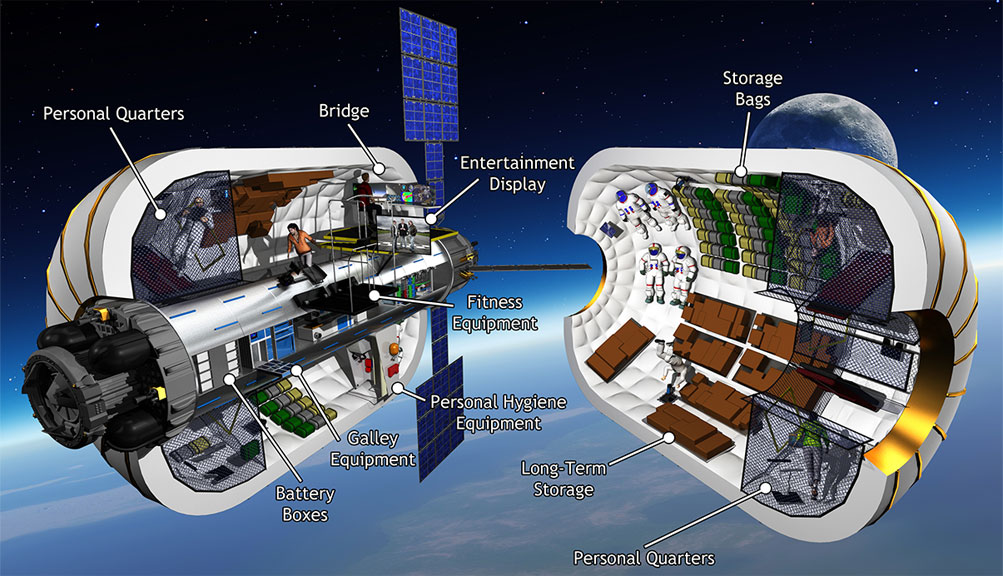Bigelow isn’t only working on expanding its modules–the company is helping to expand our reach into deep space.
With one of its modules attached to the International Space Station (ISS) and a larger habitat under development, Bigelow is moving forward with expandable technology in space.
When humans explore deep space, they’ll need a habitat that is spacious enough to live and work in. Expandables are an excellent solution–they are very strong, lightweight, and minimize occupied space during launches.
An experimental program called Bigelow Expandable Activity Module, or BEAM, is currently ongoing at the ISS. During a two-year period, the module will be assessed for its thermal, structural and mechanical properties. It will also be studied for durability and long-term peak performance.
Built on decades of incredible research, expandable habitats are an exciting example of what the future of traveling and living in space can look like.
What’s next? Bigelow is currently developing an expandable space habitat. Evolved from NASA’s TransHab technology, Bigelow’s habitat is called B330.
TransHab is short for Transit Habitat. Before NASA’s TransHab project was cancelled, work was being done on a multipurpose habitat. As part of an interplanetary vehicle, it would transport humans to and from Mars. It would also be an alternative means of habitation for the ISS. NASA’s TransHab was a hybrid space structure, with a hard, central core and an inflatable exterior shell.
Expandable structures weigh less, take up less room on a rocket, and then expand while in space to allow for greater room to live and work.
With the the increased radiation risk on humans as they travel outside of Earth’s magnetosphere, it is critical for habitats to protect against radiation. Onboard the ISS, astronauts are evaluating how well BEAM can meet this need.
NASA and Bigelow have an agreement for a technology demonstration of expandable structures on the ISS. This is allowing Bigelow to test their expandable structures and increase their Technology Readiness Level (TRL), but there’s no doubt that NASA also benefits from this collaboration. Some of NASA’s goals are to extend and sustain human activities across the solar system, create innovative new space technologies for our exploration, science, and economic future, and share NASA with the public, educators and students.
Expandable surface habitats just might be the way humans live on the Moon or Mars.
Curious to learn more about Bigelow? Click here to learn more.


